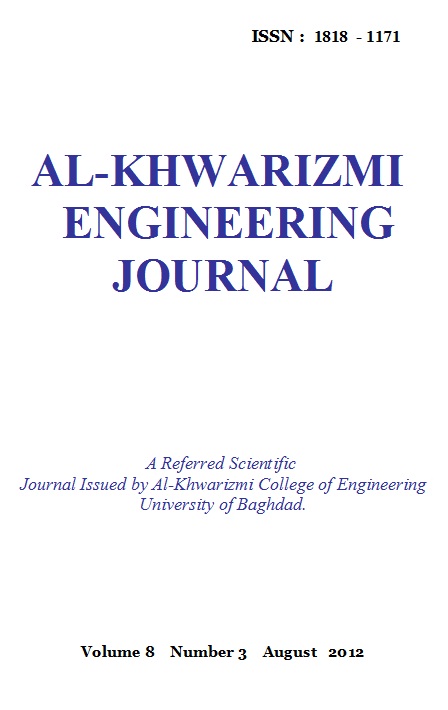Estimation of Volumetric Mass Transfer Coefficient in Bioreactor
Keywords:
Dynamic Technique, Hennery’s law constant of oxygen, agitation and aerationAbstract
This study is concentrated to investigate the effects of aeration and stirring speed on the volumetric mass transfer coefficient (KLa). A dynamic technique was used in estimating KLa values in order to achieve the aim of this study.
This study was done in 10L bioreactor by using two medias:-
- Dionized water
- Xanthan solution (1 g /L)
Moreover, the research covered a comparison between the obtained values of KLa.
The Xanthan solution was used because of its higher viscosity in comparison with water. It behaves similarly to the cultivation medium when organisms are cultivated in a bioreactor. Growth of organisms in the reactor leads to a change in the viscosity of the medium which affects the mass transfer.
Two variables, the effect of air flow rate (3-20 L/min) and the effect of stirring speed (250-700rpm) on KLa value were studied. Other parameters such as temperature, liquid volume, and stirrer shape and stirrer position were held constant; the results demonstrated an increase in KLa – value and mass transfer with increasing stirrer speed. Thus at higher speed, better dispersion of the bubbles was obtained. Therefore, that increased the surface / volume ratio which increased the mass transfer area i.e. KLa value.
Downloads
Downloads
Published
Issue
Section
License
Copyright: Open Access authors retain the copyrights of their papers, and all open access articles are distributed under the terms of the Creative Commons Attribution License, which permits unrestricted use, distribution, and reproduction in any medium, provided that the original work is properly cited. The use of general descriptive names, trade names, trademarks, and so forth in this publication, even if not specifically identified, does not imply that these names are not protected by the relevant laws and regulations. While the advice and information in this journal are believed to be true and accurate on the date of its going to press, neither the authors, the editors, nor the publisher can accept any legal responsibility for any errors or omissions that may be made. The publisher makes no warranty, express or implied, with respect to the material contained herein.












